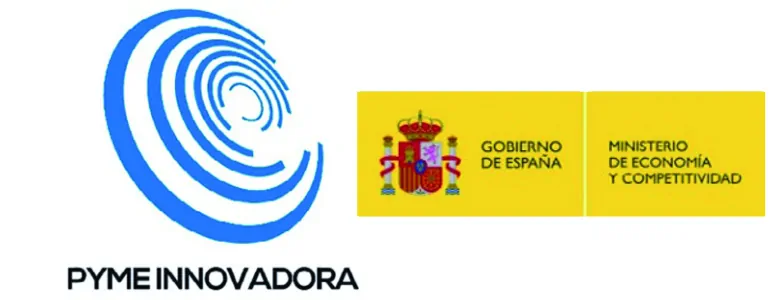
HORIZON EUROPE

 Europeo
Europeo
Specific Challenge:Process industry plants have to be operated for a long time to make their operations viable. They include equipment such as furnaces, reactors, raw materials handling and storage systems which sometimes have a lifetime beyond 30 years. Keeping these facilities up to date from a technological and from regulatory point of view (for instance related to zero waste regulations and to the circular economy) is a major challenge. Even industrial plants which are less than 10 years old, are often not equipped for new or renewable (e.g. biomass) materials and alternative or renewable energy input streams. More generally, this increased variety of inputs along with the need for energy efficiency improvements poses a real challenge and requires technological breakthroughs in the process industry.
Scope:Proposals need to cover the following:
Implement simulation models and decision support tools for the production chain in an energy intensive sector, including the detection of inefficiencies, in order to allow flexibility with respect to feedstock of variable composition, while offering energy efficiency and product quality;The development of...
ver más
Specific Challenge:Process industry plants have to be operated for a long time to make their operations viable. They include equipment such as furnaces, reactors, raw materials handling and storage systems which sometimes have a lifetime beyond 30 years. Keeping these facilities up to date from a technological and from regulatory point of view (for instance related to zero waste regulations and to the circular economy) is a major challenge. Even industrial plants which are less than 10 years old, are often not equipped for new or renewable (e.g. biomass) materials and alternative or renewable energy input streams. More generally, this increased variety of inputs along with the need for energy efficiency improvements poses a real challenge and requires technological breakthroughs in the process industry.
Scope:Proposals need to cover the following:
Implement simulation models and decision support tools for the production chain in an energy intensive sector, including the detection of inefficiencies, in order to allow flexibility with respect to feedstock of variable composition, while offering energy efficiency and product quality;The development of tools and methodologies to streamline and support retrofitting;Find the most efficient operational input conditions to optimise the performances;Develop indicators to modify input variables and its potential of replication across the industry;Facilitate and adapt the equipment towards a larger number and more diverse feedstock in order to be ready for a transition in which variability in quality, quantity and price of feedstock are key to make the production competitive and sustainable;Solutions should demonstrate the feasibility and suitability of the concepts of retrofitting at industrial scale. Demonstration of the technology in different process industries should be undertaken, covering both the technology (new ‘plug-ins’), as well as the process control (higher variability of the process requires new Monitoring & Control Systems).
Proposals submitted under this topic should include actions designed to facilitate cooperation with other projects; to enhance user involvement; and to ensure the accessibility and reusability of data produced in the course of the project.
Activities should start at TRL 5 and achieve TRL 7 at the end of the project.
The Commission considers that proposals requesting a contribution from the EU between EUR 8 and 12 million would allow this specific challenge to be addressed appropriately. Nonetheless, this does not preclude submission and selection of proposals requesting other amounts.
As an exception from General Annex D, the funding rate for eligible costs in grants awarded under this topic will be differentiated: 100% of the eligible costs for beneficiaries and linked third parties that are non-profit legal entities; and 50% of the eligible costs for beneficiaries and linked third parties that are for profit legal entities.
Expected Impact: Increasing the resource and energy efficiency of the targeted processes by 20%; Decrease GHG emissions through retrofitting by at least 30%; Decreased utilisation of fossil resources in the process industry of at least 20%; Reduced OPEX by 30% and increased productivity by 20%; Effective dissemination of major innovation outcomes to the current next generation of employees of the SPIRE sectors, through the development, by education/training experts, of learning resources with flexible usability. These should be ready to be easily integrated in existing curricula and modules for undergraduate level and lifelong learning programs. Relevant indicators and metrics, with baseline values, should be clearly stated in the proposal.
Cross-cutting Priorities:International cooperationContractual Public-Private Partnerships (cPPPs)SPIREOpen Innovation
ver menos
Características del consorcio
 :
La ayuda es de ámbito europeo, puede aplicar a esta linea cualquier empresa que forme parte de la Comunidad Europea.
:
La ayuda es de ámbito europeo, puede aplicar a esta linea cualquier empresa que forme parte de la Comunidad Europea.
Características del Proyecto
Los costes de personal subvencionables cubren las horas de trabajo efectivo de las personas directamente dedicadas a la ejecución de la acción. Los propietarios de pequeñas y medianas empresas que no perciban salario y otras personas físicas que no perciban salario podrán imputar los costes de personal sobre la base de una escala de costes unitarios
Los otros costes directos se dividen en los siguientes apartados: Viajes, amortizaciones, equipamiento y otros bienes y servicios. Se financia la amortización de equipos, permitiendo incluir la amortización de equipos adquiridos antes del proyecto si se registra durante su ejecución. En el apartado de otros bienes y servicios se incluyen los diferentes bienes y servicios comprados por los beneficiarios a proveedores externos para poder llevar a cabo sus tareas
La subcontratación en ayudas europeas no debe tratarse del core de actividades de I+D del proyecto. El contratista debe ser seleccionado por el beneficiario de acuerdo con el principio de mejor relación calidad-precio bajo las condiciones de transparencia e igualdad (en ningún caso consistirá en solicitar menos de 3 ofertas). En el caso de entidades públicas, para la subcontratación se deberán de seguir las leyes que rijan en el país al que pertenezca el contratante
Características de la financiación
A number of non-EU/non-Associated Countries that are not automatically eligible for funding have made specific provisions for making funding available for their participants in Horizon 2020 projects. See the information in the Online Manual.
2. Eligibility and admissibility conditions: described in Annex B and Annex C of the Work Programme.
Proposal page limits and layout: please refer to Part B of the proposal template in the submission system below.
3. Evaluation:
Evaluation criteria, scoring and thresholds are described in Annex H of the Work Programme.
Submission and evaluation processes are described in the Online Manual.
The following exceptions apply:
Under 3 (a)Proposals are first ranked in separate lists according to the topics against which they were submitted (‘topic ranked lists’). When comparing ex aequo proposals from different topics, proposals having a higher position in their respective 'topic ranked list' will be considered to have a higher priority in the overall ranked list.Under 3 (b)For all topics and types of action, the prioritisation will be done first on the basis of the score for Impact, and then on that for Excellence.
The threshold for the criteria Excellence and Impact will be 4. The overall threshold, applying to the sum of the three individual scor... 1. Eligible countries: described in Annex A of the Work Programme.
A number of non-EU/non-Associated Countries that are not automatically eligible for funding have made specific provisions for making funding available for their participants in Horizon 2020 projects. See the information in the Online Manual.
2. Eligibility and admissibility conditions: described in Annex B and Annex C of the Work Programme.
Proposal page limits and layout: please refer to Part B of the proposal template in the submission system below.
3. Evaluation:
Evaluation criteria, scoring and thresholds are described in Annex H of the Work Programme.
Submission and evaluation processes are described in the Online Manual.
The following exceptions apply:
Under 3 (a)Proposals are first ranked in separate lists according to the topics against which they were submitted (‘topic ranked lists’). When comparing ex aequo proposals from different topics, proposals having a higher position in their respective 'topic ranked list' will be considered to have a higher priority in the overall ranked list.Under 3 (b)For all topics and types of action, the prioritisation will be done first on the basis of the score for Impact, and then on that for Excellence.
The threshold for the criteria Excellence and Impact will be 4. The overall threshold, applying to the sum of the three individual scores, will be 12.
4. Indicative time for evaluation and grant agreements:
Information on the outcome of evaluation (single-stage call): maximum 5 months from the deadline for submission.
Signature of grant agreements: maximum 8 months from the deadline for submission.
5. Proposal templates, evaluation forms and model grant agreements (MGA):
Innovation Action:
Specific provisions and funding rates
Standard proposal template
Standard evaluation form
General MGA - Multi-Beneficiary
Annotated Grant Agreement
6. Additional provisions:
Horizon 2020 budget flexibility
Classified information
Technology readiness levels (TRL) – where a topic description refers to TRL, these definitions apply
Members of consortium are required to conclude a consortium agreement, in principle prior to the signature of the grant agreement.
As an exception from General Annex D, the funding rate for eligible costs in grants awarded under this topic will be differentiated: 100% of the eligible costs for beneficiaries and linked third parties that are non-profit legal entities; and 50% of the eligible costs for beneficiaries and linked third parties that are for profit legal entities.
8. Additional documents:
1. Introduction WP 2018-20
5. Introduction to Leadership in enabling and industrial technologies (LEITs) WP 2018-20
5ii. Nanotechnologies, advanced materials, advanced manufacturing and processing, biotechnology WP 2018-20
General annexes to the Work Programme 2018-2020
Legal basis: Horizon 2020 Regulation of Establishment
Legal basis: Horizon 2020 Rules for Participation
Legal basis: Horizon 2020 Specific Programme
7. Open access must be granted to all scientific publications resulting from Horizon 2020 actions.
Where relevant, proposals should also provide information on how the participants will manage the research data generated and/or collected during the project, such as details on what types of data the project will generate, whether and how this data will be exploited or made accessible for verification and re-use, and how it will be curated and preserved.
Open access to research data
The Open Research Data Pilot has been extended to cover all Horizon 2020 topics for which the submission is opened on 26 July 2016 or later. Projects funded under this topic will therefore by default provide open access to the research data they generate, except if they decide to opt-out under the conditions described in Annex L of the Work Programme. Projects can opt-out at any stage, that is both before and after the grant signature.
Note that the evaluation phase proposals will not be evaluated more favourably because they plan to open or share their data, and will not be penalised for opting out.
Open research data sharing applies to the data needed to validate the results presented in scientific publications. Additionally, projects can choose to make other data available open access and need to describe their approach in a Data Management Plan.
Projects need to create a Data Management Plan (DMP), except if they opt-out of making their research data open access. A first version of the DMP must be provided as an early deliverable within six months of the project and should be updated during the project as appropriate. The Commission already provides guidance documents, including a template for DMPs. See the Online Manual.
Eligibility of costs: costs related to data management and data sharing are eligible for reimbursement during the project duration.
The legal requirements for projects participating in this pilot are in the article 29.3 of the Model Grant Agreement.
Información adicional de la convocatoria
Otras ventajas
Ayudas Similares

| Abierta

| Próximamente

| Abierta

